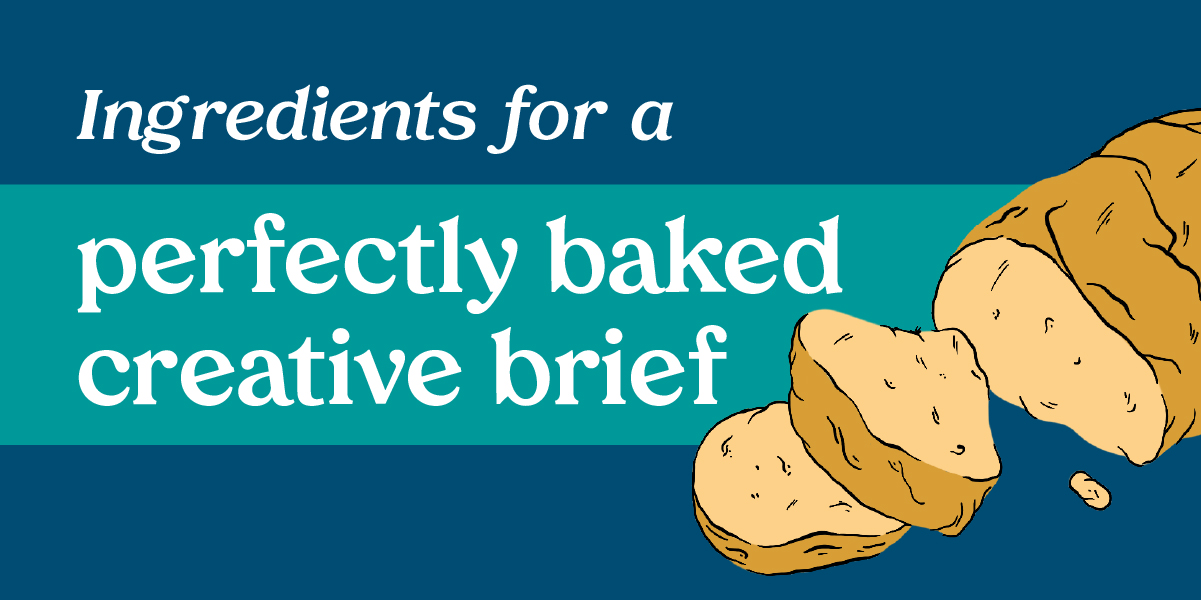"How much?" *shudder* the question every freelancer hates being asked. But don't worry, I've got my top 10 questions I ask both myself and clients to help me work out the answer.
"How much?" *shudder* the question every freelancer hates being asked. But don't worry, I've got my top 10 questions I ask both myself and clients to help me work out the answer.
Going through the decision-making process of choosing what to charge your clients for the genius you serve is a necessary, daily process to keep any freelance business alive. Think of it like the cereal your business needs, a big bowl of financial energy as early as possible to kick start the process.
As frustrating as that process can be, without it, we’re faced with the possibility of not charging enough money or choosing the right method to cover the task at hand. Or worse, the client losing patience and moving onto the next eager creative in line.
It’s this potent mix of speed and accuracy we’re aiming for; we want to answer the “how much?” question from our potential new client as quickly and accurately as possible.
Too slow and we lose them. Too inaccurate (read: undercharge or panic price) and we’re the ones left hungry
I’d be lying if I said this has always been easy. In fact, in years past I have definitely lost a prospective client or two by not knowing how to work out what to charge fast enough.
So how do you work out not only what to charge, but how to charge it? Don’t worry, I’ve got you covered.
I recently had a student ask me “But how do you know when to charge a retainer vs a project rate?” and I had to take a second to ask myself the same. Truth be told, after hundreds of clients and thousands of quotes, much of it has become second nature, like when you’re making your fav snack (hello cream cheese and tomato on sourdough).
So I thought I’d take a moment and jot down some of the questions I ask both myself and the client during that initial discovery process to work out the way I want to charge and how much I can see this adding to the Chorizo treat fund.
I’ll start with the questions I ask myself…
1. How long is this job going to take me to complete?
Let’s start with the basics; time. Think of time like flour, if you needed to make a cake, you’re not going to spoon out 500g of time and dig in. Knowing how long I need to do the best version of my genius is the first place I start.
I generally base this off of experience, I have a pretty good idea how fast or slow I am for most things my clients ask of me. But back in those earlier days I relied on the Who Wants To Be A Millionaire methods. Asking a friend who’s done the work before, removing some of the guesswork by doing part of the job as a test, calling my mum and asking her what to do (that rarely works, she’s a mortuary hairdresser).
And if it’s really something I have no idea how long it will take, I’d head down the hourly rate path or sell blocks of time so I could learn while I earn, all while still keeping the client happy and their problem being solved.
2. Is the client offering something I’m actually interested in taking on?
One of the hardest habits to kick as a people-pleasing creative is learning what saying no looks like. We can often get caught up in the “I should be grateful I’m being paid to do this”, but sometimes there are jobs, clients and projects that are simply outside what we are happy to spend our time on.
Time is a currency for us too
It has to be worth us swapping that time of ours for the dollars dished out by the client, especially when that serving size is small. You need to make the job worthwhile for you to do, whatever that looks like.
There’s nothing wrong with altering the price you’re charging in relation to how much you want the work. I’ve definitely quoted more for something that I don’t want to do in the hopes they either see it and run or pay me more for the trouble.
3. What pricing methods am I comfortable with, and which ones pair best with the project requirements?
If you were part of the Pricing Method Pairings Masterclass, you’ll know I have a pretty unique approach to the different methods I use within my freelance business. Whilst there’s nothing wrong with having some hourly clients, building out that variety of pricing methods is legitimately one of the smartest things you can do for the pricing potential of future freelance you.
Once you know what all of these methods could look like and what they pair nicely with, you can start developing a really robust spread of offers as a freelancer, creating an almost “choose your own adventure” style of decision-making for both you and your clients. Option A or Option B, here are the specifics, which do you choose.
4. Is this a client I want to work with long term, and how does that impact this project?
I have clients I work with that I would NEVER offer a retainer to. Why? Because a retainer is like an engagement ring, you’re committing to having them in your life for the foreseeable future (or however long is contracted). Anyone who has had a bad boyfriend or a toxic relationship can tell you to listen to that gut feeling when it pops up and don’t offer that commitment.
In saying that, it doesn’t mean I’d say no to a client that’s a one off job, but it does impact the dollar figure on that quote, because any future revenue from them will be on a case by case basis, and quoting is a process that costs time.
5. Am I prepared to negotiate pricing if needed, and what are my negotiation boundaries?
I’ve said it before and I’ll say it again, a client who wants to negotiate isn’t a bad thing. If a client choses not to fall off the face of the earth at your quote and instead come back with the intention of finding a way to make it work, then we may as well try and see if we can find a way to meet somewhere in the middle.
Now, do not read that as me telling you the moment a client tells you that you’re too expensive to drop price immediately. I would NEVER say that. But if they are coming back trying to negotiate the price, that’s your opportunity to start a conversation, not an auction. Negotiating the dollars means negotiating the deliverables too. If they want to pay less, they get less, but make sure you discuss with them how that impacts the job as a whole. Remember, they’re human too.
Then there’s the questions I ask the client, and these help guide me to choosing what dollars to charge and method to choose.
As much as we want the process of this to beset and forget, clients are unique and all different. This is a good thing. It means we can change the value, alter the outcomes and customise the way we respond based not only on the way we choose to work, but how we want to work with that client in particular.
These next questions are part of every single briefing call I have with a client, regardless of whether it’s a formalised zoom call booked as part of my briefing process, or a casual chat with an existing client wanting new work. These all change both the price I choose to charge and the method I go about it.
1. What sort of timeline or deadline are we looking at?
This ones a simple one. If they want it faster, they need to pay more in the form of a higher overall fee or an additional rush rate. It’s that triangle of Fast, Cheap, Quality approach, and I don’t offer low quality.
To clarify, it’s not greedy to charge more for something the client want’s faster than a bowl of 2 minute noodles. An inflated rate for a short deadline is there to acknowledge the priority and, if need be, the shifting of other deadlines or timelines of other jobs. They want the best seat in at the table, they gotta pay the price.
2. Will approvals be provided by yourself or are there other stakeholders involved?
Stakeholders is just a fancy way of saying “do I need to worry about the opinions of others or just your own”. When there’s plenty of cooks in the kitchen, you need to know which head chef is the one whos orders you’re best to follow.
This isn’t as important in smaller projects or 1:1 clients, but if I had a dollar for every time a client asked a friend/spouse/offspring/stranger their opinion on what I have spent hours painstakingly crafting, I could retire. Having this kind of conversation, regardless of size, is important to acknowledge the roles you both play, and who’s not a credited character in the story.
3. What does success look like for this project?
This can sound funny, but getting the client to articulate what would make them consider this a success is a smart move. This means you have clear goalposts to aim for and can refer back to this moment if things start to creep where you both have agreed is out of bounds.
This also might open up the conversation for other areas you can help them. For example, if you’re designing a book cover, you might suggest additional things they have yet to consider like mock ups of the book for advertising or social media and advertising to promote the book.
What was a single, small project can grow into a bigger one with the power of helpful suggestion.
4. Did you have an investment in mind or would you prefer I quote you options?
This ones a good one because it gives them an opportunity to offer up their budget without framing it like it’s something you need to fit within to be chosen as the creative for them. More often than not, they chose the second option, but this way they’ve been asked.
I try to use investment instead of budget where possible, it feels more open and better reflects what I’m providing. Working with me is an investment, not something to fit inside a budget tick box.
5. Are there any specific payment processes or additional requirements I need to be aware of?
Larger clients often have payment terms that aren’t as friendly to freelancers. 30 days, 60 days, I’ve even seen 90 days payment terms. And while the client may be used to that with all their other suppliers, unless you ask you might end up stuck doing a bunch of work and waiting for the seasons to change.
Same with some clients who require you to register as a supplier within their systems or provide paperwork to work with them. Understanding the process required may mean you inflate the cost to cover this. Many of the bigger businesses I’ve worked with who have these requirements in place don’t blink at the price being higher because they know it’s part of doing business.
Shifting out of the employee mindset and building the bravery to ask these questions takes guts. It doesn’t happen overnight and is definitely a skill you build over time.







